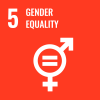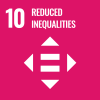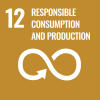
Understanding how population trends are likely to unfold in the short, medium and long terms is critical for achieving a more inclusive, prosperous and sustainable future as recognized in the Declaration on Future Generations. This policy brief provides an overview of some of the main findings of the recently released report, World Population Prospects 2024: Summary of Results (United Nations, 2024a) with the aim of helping countries prepare for population sizes, age structures and spatial distributions that may differ appreciably from those of their recent past.
ALL POPULATIONS ARE MOVING TOWARDS LONGER LIVES AND SMALLER FAMILIES
At first glance, the demographic outlook of countries appears quite diverse. Some have high levels of fertility and are growing rapidly, while others have historically low levels of fertility. Those that have experienced low levels of fertility for several decades are seeing their populations age rapidly, with some now beginning to decline in size. While these differences are striking, it is important to understand that all populations are following a similar path towards longer lives and smaller families, a process known as the “demographic transition”. Much of today’s demographic diversity stems from the fact that countries are at different stages in this process.
The observed or anticipated date at which a population reaches its peak size can be used to approximate the different stages of the demographic transition, to explore differences in trends across countries and regions today, and to provide insights about future trajectories (map 1). Because the transition unfolds in a series of sequential stages, the policy recommendations for countries that have already peaked in size are relevant also for those that are still growing, albeit with a potential time lag of several decades.
COUNTRIES AND AREAS WITH POPULATIONS THAT HAVE ALREADY PEAKED
In 63 countries and areas, containing 28 per cent of the world’s population in 2024, the population peaked in size before or during 2024, meaning that these locations are now in a post-transitional stage, when the population size tends to stabilize or decline. This group includes China, Germany, Japan and the Russian Federation. The number of people living in this group is projected to decline by 14 per cent over the next 30 years (figure 1). Based on the specific circumstances and priorities of each country, population stabilization or limited decline may bring additional opportunities to achieve sustainable development.
The number of persons aged 65 or older in countries and areas with populations that have already peaked is projected to reach 409 million by 2027, surpassing the number of children under age 18. As populations in this group continue to age, long-term planning is needed, including to strengthen systems of health care and long-term care, improve the sustainability of social protection systems and invest in new technologies. Countries with populations that have already peaked in size and are ageing rapidly should consider leveraging technology, including automation, to improve productivity at all ages. They should also strengthen efforts to provide lifelong learning and retraining, support multigenerational workforces and create opportunities to extend working lives for those who can and want to continue working (United Nations, 2023a).
For nearly all of the countries and areas in this group, fertility is already below the replacement level of 2.1 live births per woman. In locations where the population has peaked already, gender gaps in the division of domestic work within households and inadequate child and family welfare support may discourage women and couples from having larger families even when they want them. Governments wishing to help couples and individuals to achieve their desired family size may consider a variety of policies aimed at balancing family and work life. These may include providing paid parental leave and flexible working arrangements; supporting affordable, high-quality childcare options and housing; providing comprehensive care for an ageing population; and encouraging an equal distribution of caregiving and household responsibilities between men and women.
COUNTRIES AND AREAS WITH POPULATIONS LIKELY TO PEAK WITHIN 30 YEARS
In 48 countries and areas, representing 10 per cent of the world’s population in 2024, the size of the population is projected to peak between 2025 and 2054. This group includes Brazil, the Islamic Republic of Iran and Viet Nam. The countries and areas in this group are in the later stages of the demographic transition, when fertility falls below the replacement level and growth slows as the population approaches its peak size. They face many of the same challenges and opportunities as those with populations that have already peaked and those with populations likely to grow through 2054. Over the next three decades, members of this group will need to balance the immediate demands of a population that is younger and still growing with the emerging demands of a population that is older and no longer growing.
Compared to countries and areas with populations that have peaked already, most of those with populations that are likely to peak in the next 30 years are characterized by an age structure that is more conducive to population growth, with a relatively larger share of the population at working ages. In many of them, the decline in fertility occurred later and the share of people at younger ages has not yet been counterbalanced by an increase in those at older ages. As a result, the share of population in the working ages (between 20 and 64 years) in this group has continued to grow while in countries and areas with populations that have peaked already the share has been declining. The growth in the share of the population at working ages can provide an opportunity for accelerated economic growth and social development, known as the demographic dividend. To amplify and prolong this opportunity, sound economic and social policies are needed (United Nations, 2023b).
In locations where the size of the population is projected to peak in the next 30 years, a crossover between the number of children under age 18 and the number of persons aged 65 or older is likely to occur by the mid-2040s. The number of persons aged 65 or older in this group is likely to double over the next 30 years, reaching 203 million in 2054 and representing 23 per cent of the total population. Faced with a future of rapidly growing numbers and proportions of older persons, countries and areas in this group may consider measures to strengthen their systems of health care and long-term care and improve the sustainability and equity of social protection systems (United Nations, 2023a). Promoting lifelong learning, expanding employment opportunities for older persons who want to continue to work, and addressing age-based prejudice and discrimination are other strategies that these countries and areas may wish to explore.
COUNTRIES AND AREAS WITH POPULATIONS LIKELY TO GROW THROUGH 2054
In 126 countries and areas, the population is likely to continue growing through 2054, potentially reaching a peak later in the century or beyond 2100. This group includes several of the world’s most populous countries, including India, Indonesia and Nigeria. It also includes countries such as Australia, Canada and the United States of America, which would likely peak much sooner without immigration. With more than half of the world’s population, the trajectory of population change for this group will have a major influence on the size and timing of the population peak at the global level (figure 1).
Countries and areas in this group are at different stages of the demographic transition. Over the next 30 years, the total population of those located in sub-Saharan Africa is projected to see an increase of 79 per cent, reaching 2.2 billion in 2054, followed by an additional increase of 51 per cent, reaching 3.3 billion at the end of the century. Many of them already face severe economic, social and environmental impediments. Rapid population growth is likely to pose a serious challenge to their sustainable development, increasing the scale of investments and efforts required to eradicate poverty, end hunger and malnutrition, and ensure universal access to health care, education and other essential services. Stepping up access to family planning services, including for a wide range of effective contraceptive methods, may help individuals and couples who aspire to have smaller families to achieve their desired family size (United Nations, 2022). Raising the minimum legal age at marriage and integrating family planning and safe motherhood measures into primary health care can help to raise women’s levels of education, facilitate their economic participation and reduce the incidence of early childbearing. Other countries and areas of this group are likely to experience slower population growth. Twenty-eight of these are already in the later stages of the demographic transition, with fertility below the replacement level in 2024. In a small number of mostly high-income countries, including Australia, Canada, Oman, Saudi Arabia, the United Arab Emirates and the United States of America, the population is projected to grow by over 20 per cent between 2024 and 2100 largely as a result of immigration.
One of the pressing considerations for this group is how to minimize future environmental impacts while meeting the needs of growing populations. Environmental damage has often arisen from economic processes that lead to higher standards of living. Population growth has amplified such environmental pressures by adding to total economic demand. Most of the countries and areas facing rapid population growth over the next decades are classified today as “low-income economies”. Although they have until now been responsible for only a small share of the global consumption of material resources and emissions of greenhouse gases (GHGs), they will need to increase their energy consumption substantially if they are to develop economically and achieve the Goals and targets of the 2030 Agenda (United Nations, 2021).
Promoting sustained economic growth in such locations without further damaging the environment will require support from the international community. The high- and middle-income countries that have contributed most to unsustainable patterns of resource use bear the greatest responsibility for moving rapidly to achieve net-zero GHG emissions and for implementing strategies to decouple human economic activity from environmental degradation, regardless of whether their populations are currently growing or declining. Because of the multiplicative effect of population on GHG emissions, however, the need to decouple economic activity from the current overreliance on fossil-fuel energy is especially urgent where populations are projected to continue growing through the end of the century.
In around 75 per cent of the countries and areas in this group, the share of the population in the working ages will continue to increase more rapidly than the total population over the next 30 years. Under specific circumstances (see above), this increase may provide a window of opportunity (demographic dividend) for accelerated economic growth on a per capita basis (figure 2). Those in sub-Saharan Africa have the largest window of time still available to take advantage of their youthful age structures. In these locations, substantial investments in education, health care and infrastructure, as well as reforms to promote the creation of decent jobs and more transparent and efficient government institutions, are needed to ensure that this time-bound opportunity is not wasted (United Nations, 2023b, 2023c).
 Welcome to the United Nations
Welcome to the United Nations


